I had made several visits to the Sierra junipers around Carson Pass before I first saw the giant semi-cascade. It was pretty awesome.
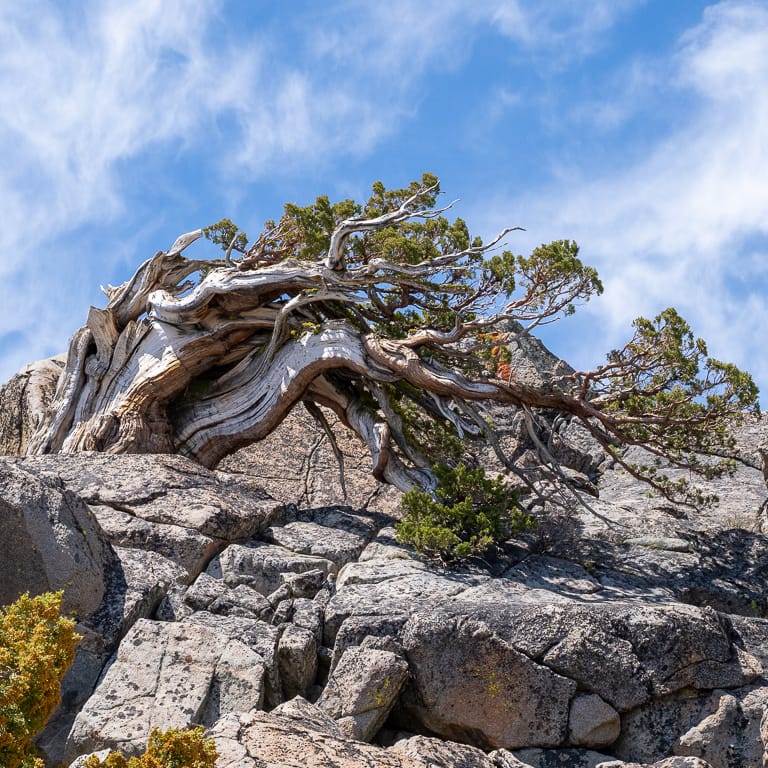
Natural semi-cascade style Sierra juniper
Much of the deadwood on this tree is a bright white color that makes a nice contrast to the reddish live veins.
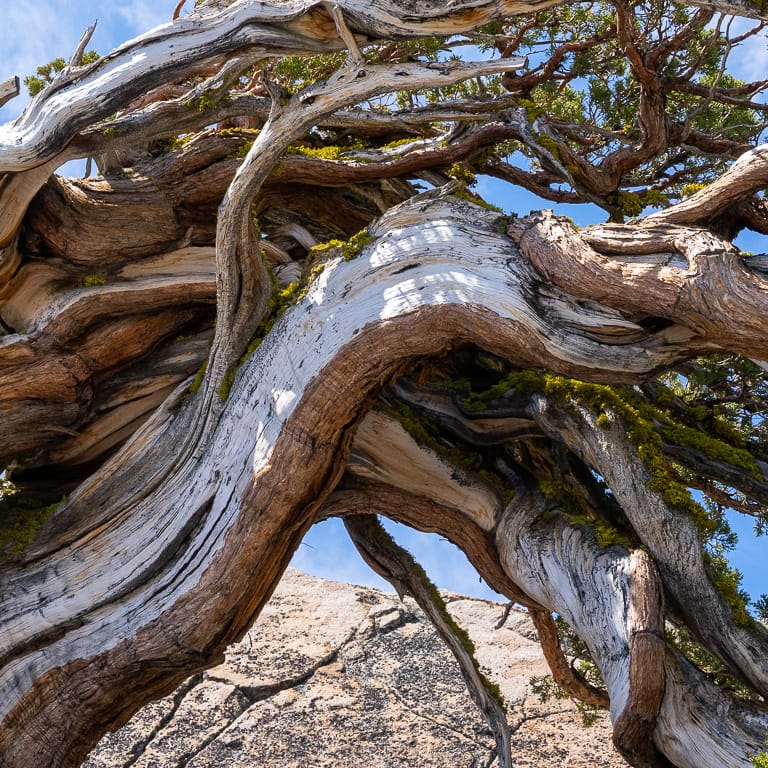
A strip of bright white on one of the main trunks
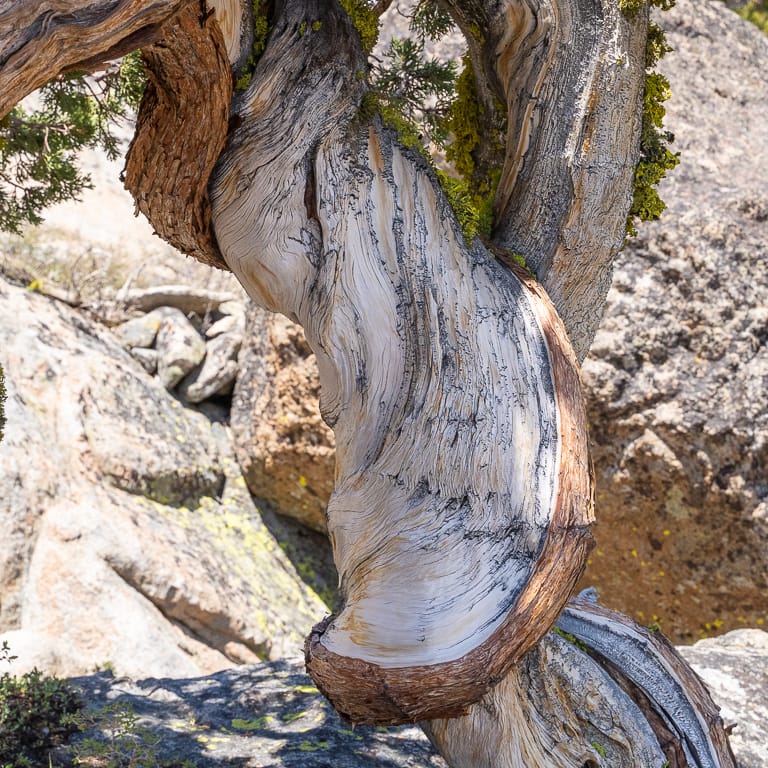
A slender lifeline spiraling along a descending branch
Not all of the deadwood was so smooth or brightly colored. Near the tree’s apex, the deadwood looked as if it had been sandblasted – not surprising given the tree’s exposure to winds carrying ice and other debris.
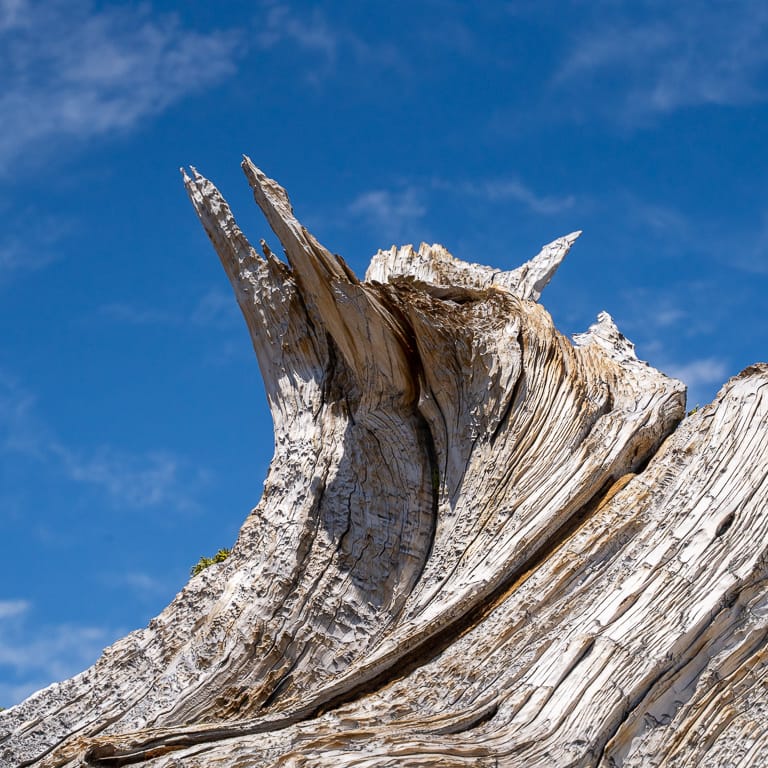
Pointed deadwood at the tree’s apex
As you can see, the wood grain reveals many years of growth. Considering the size of this tree and the fact that Sierra junipers can reach 3,000 years old, this could be a very old juniper.
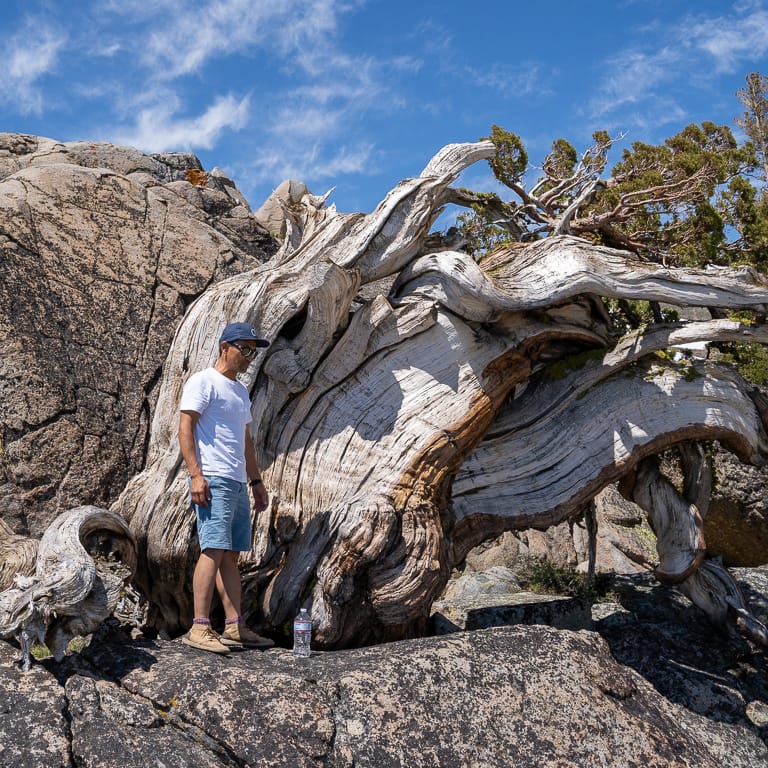
Hiroharu next to the giant trunk
The windward side of the tree reveals less drama as most of the live bark has receded to narrow stretches along the leeward branches.
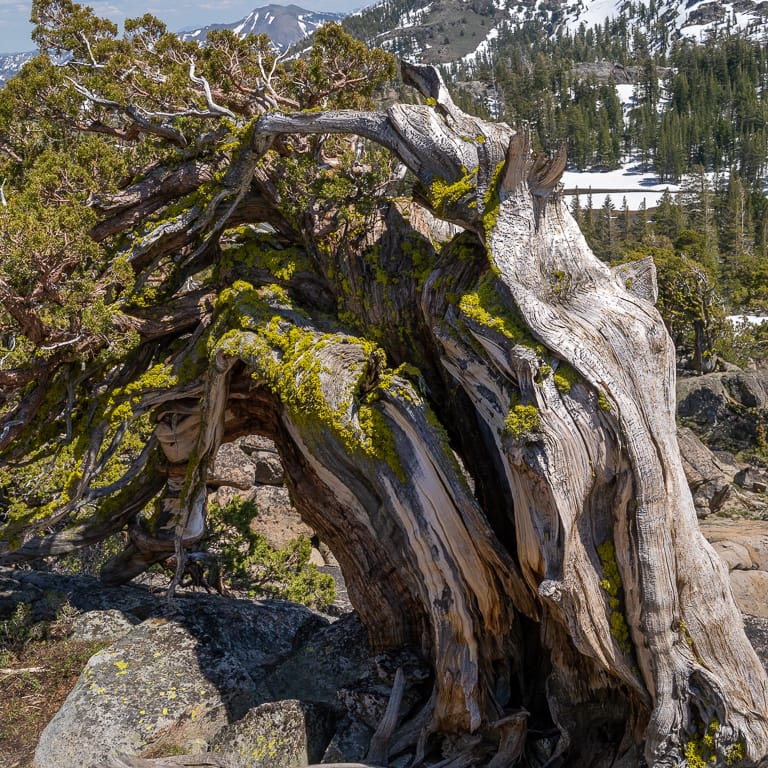
View from the west
I find this tree captures the drama of its environment in a form that’s immediately recognizable to bonsai enthusiasts. It’s a great reminder of how the forces that act on trees in nature inform the conventions that guide bonsai style.
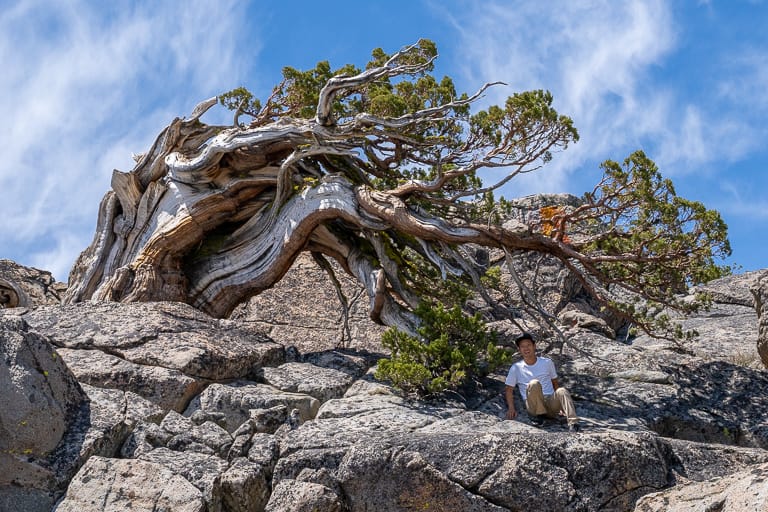
Yoichi posing in the shade
Subscribe to Bonsai Tonight
New Posts Delivered Every Tuesday and Friday
Zack Clayton says
I think this is my favorite tree of the ones shown so far on this field trip. I have seen others like it in the Rockies, and I have a large boxwood that was sun-seeking that I collected from a hedge that is similar in form. It is not just wind that will cause this style to naturally occur even if that is what most of us think of.
Jonas Dupuich says
Thanks Zack, that’s a good point. Would love to see junipers like this in the Rockies!
Julio César Zavala says
Impressive object of nature, the greatest creator. I never cease to be surprised by this juniper and the life it represents along with all the beauty of its surroundings.